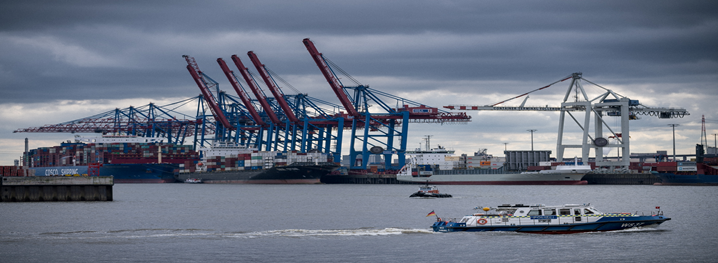The shippers are in for struggle yet another time, with the market buzzing in speculations of liners planning of ‘blank sailing’ during China’s Golden Week holiday in early October to extract maximised profits.
The record-high rates of the latest weeks, as can be seen in several global indexes, such as Shanghai Export Containerized Freight Index (SCFI), Drewry’s composite World Container Index, Ningbo Containerized Freight Index (NCFI) and Freightos Baltic Index (FBX) are not expected to decrease in the next months.
With the pre-golden week rush starting usually three to four weeks before the main event, and with importers speeding up their production processes to ship their products out of China on time, constraints in ocean freight and land transportation increase the chance for cargos to be rolled and for deliveries to be postponed, according to the largest container line in the world, Maersk.
The strategy plans to significantly tighten space on vessels for the shippers close to the national holiday in China by skipping ports or even entire routes owing to lower demand after shut down and hence further push the rates higher.
Even though blank sailings close to the Golden week are a traditional practice to make up for lower demands during the winter months, this year, the cargo owners expected the liners to maintain the deployment of the entire fleet along transpacific routes after the pandemic, owing to the strong demand and elevated rates of freight transportation.
This year’s Golden Week might as well increase the number of repercussions in ocean freight and inland transportation across multiple trades and regions.
With the Ningbo terminal shut down ensuring reversal of slight decrease in market rates in the past few weeks and increase in forward bookings on routes to the west coast of the United States, companies are expected not to let go of this opportunity to bump up the freight rates further up.
Reference:
https://container-news.com/chinas-golden-week-to-trigger-new-round-of-void-sailings/
The floating traffic jams off ports. The multiplying costs of moving freight. The resulting shortages of goods. All of this had seemed like an unpleasant memory confined to the COVID-19 pandemic. But no such luck!
An ocean container capacity crunch has hit global trade just as peak shipping season starts, with freight spot rates up some 30% over the past few weeks and heading higher.
The first joint Europe-wide assessment of the drivers and impact of chemical pollution by the European Environment Agency (EEA) and the European Chemicals Agency (ECHA) has concluded that, despite progress in some areas, “more work is still needed to reduce the impact of harmful substances on human health and the environment”. Key findings include:
The severe drought which has forced the Panama Canal, one of the world’s busiest trade passages, to limit daily crossings could impact global supply chains during a period of high demand.
In the early hours of March 26, the Singapore-flagged ship Dali, loaded with 5,000 containers, slammed into Baltimore’s Francis Scott Key Bridge, causing the 1.6-mile (2.5-kilometer) bridge to collapse in a matter of seconds. The Dali was departing for Colombo when the disaster struck. Initial fears were confirmed that half a dozen people lost their lives in the accident.
The pharmaceutical and biotechnology industries constantly seek innovative methods to enhance product stability, solubility, bioavailability and ease of use. Within this realm, CDMOs [Contract Development & Manufacturing Organizations] serve as invaluable partners in the development and production of high-quality drug products.
Chinese New Year 2024 is upon us, disrupting logistics from Asia starting Feb 10th. This event is expected to impact global shipping until Feb 21. Freight rates from Asia has skyrocketed with rates to the US surging by 3.5X and Europe by 6X.
Amid ongoing Red Sea diversions by shipping giants like Maersk, CMA, logistics managers are globally confronting a dual challenge of escalating ocean and air freight prices alongside cargo disruptions due to
Why will CM be the next generation on quality?
